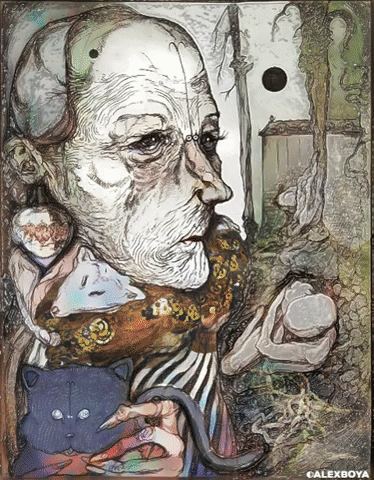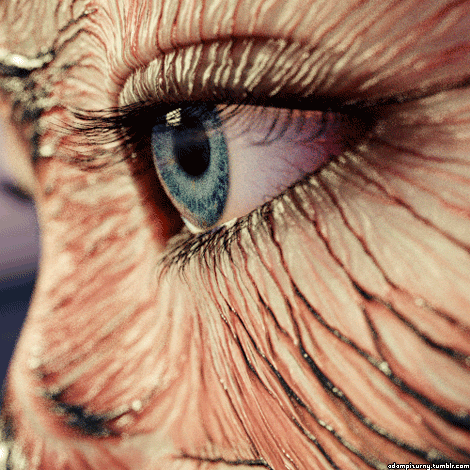Auditory-Tactile Synesthesia: When Sound Gives You Goosebumps (Literally)
#TalkNerdyToMe® Staff Writer
Listen to the sound of a violin and experience it streaming across your skin. A dog's bark, and zap, shock of pressure on your leg. Sounds bizarre? For auditory-tactile synesthetes, it's just normal life.
This rare neurological disorder mixes up sound and touch in a way most people have never experienced. Let's explore what auditory-tactile synesthesia is, how it feels, how it works, and what it's like for people who experience it.
Understanding Auditory-Tactical Synesthesia
Definition of Auditory-Tactile Synesthesia
In short, auditory-tactile synesthesia happens when sounds trigger physical sensations on the skin. They're not metaphorical or conceptual responses—they're actual, automatic reactions. Picture tingling, pressure, warmth, or even chills in specific areas on the body.
There are those who will experience a breeze across their arms if they listen to classical music. Others will receive a shock on the back of the neck when they are exposed to the noise of nails on a chalkboard. The combination is automatic and sustained—once your brain associates a sound with a touch, it stays that way.
How Is It Different from Other Types of Synesthesia?
Synesthesia is not an umbrella term. There is grapheme-color synesthesia (letters and numbers possess color), lexical-gustatory synesthesia (words taste), and number-form synesthesia (numbers are shapes).
Auditory-tactile synesthesia is unique because it turns sound into touch. No pictures, no flavors—just sensations on your skin caused by what you hear. And it's one of the rarer forms of synesthesia, too, and many people who have it don't even realize their experience is unusual.
What Does It Feel Like?
People with AT synesthesia describe a range of sensations:
-Light static on the skin
-Pulsation or vibrations
-Sudden cold or warmth
-Pressure in specific areas
It's usually the same every time. If one sound produces a feeling once, it will probably do so again. That predictability is an indicator of synesthesia.
What's Going On in the Brain?
Our brains usually process sound and touch in different places. But for people with AT synesthesia, these places may be more connected to one another or sharing information more than usual.
Brain scanning studies have found that the brain's auditory cortex (sound) and the somatosensory cortex (touch) are activated when people with this condition hear certain sounds. That crossover is the cause of the overlap of sensations.
Prevalence and Demographics
The prevalence of synesthesia has been estimated at 2-4% of the population, although auditory-tactile synesthesia is much less common. Not much investigation has addressed the demographic details of auditory-tactile synesthesia, although research on synesthesia as a whole suggests that it is more common in women. Individuals with AT synesthesia are often unaware that their perceptions are different from those of others, and therefore underreporting. Further study is needed to adequately measure the prevalence and demographic distribution of this fascinating condition. The fact that synesthesia individuals might not be conscious of it verifies that more consciousness is needed amongst common people.
Symptoms of Auditory-Tactile Synesthesia
Common Symptoms Experienced
AT synesthesia patients report a vast array of tactile feelings caused by sound stimuli. These sensations can be in the form of tingling, pressure, vibration, or even a sensation of temperature change on the skin. The intensity and area where the sensation feels is usually the same for all individuals. For instance, some will have a gentle stroking on their arm after listening to music, while others feel a shiver run down their spine when they hear a particular musical instrument. It is also significant to note that this form of synesthesia can vary, with some experiencing mild feelings while others experience more intense and interfering touch responses.
Variability of Sensory Responses
Variability of sensory responses among individuals with AT synesthesia is significant, and the concept of synesthesia differs from individual to individual. While a few possess a one-to-one relationship of particular sounds with particular tactile sensations, others have more complex connections. Changes in these differences are determined by the character of auditory stimulus, the emotional state of the individual, and their previous experience. For example, a familiar song can provide a stronger tactile response than an unfamiliar song. The variability of these experiences is evidence to the subjective nature of synesthesia and the complexity of neural processes involved in the integration of AT synesthesia. It also suggests that hearing music could be a personal experience for synesthetes.
Impact on Everyday Life
Tactile-auditory synesthesia can have an impact on everyday life in a large range of different ways depending on the intensity and nature of the sensory feelings. For some, it may be a source of enrichment and enhanced sensory sensitivity, offering a method of experiencing sound and music with a new dimension. However, to some, particularly those who experience overwhelming or aversive touch sensations, AT synesthesia can be disruptive and even disabling. Everyday sounds can trigger unpleasant feelings, leading to sensory overload as well as avoidance behavior. The control of the individual over regulating these sensations also decides their general quality of life. Understanding the different types of synesthesia is necessary to assist them with the appropriate assistance and coping strategies.
Superpower or Sensory Struggle?
Both, day-to-day varying.
Advantages:
- Deep connection with music
- More sensory input = stronger emotional response
- Inspiration for musicians and artists
Pitfalls:
- Loud noises = physical pain
- Concerts, crowds, or chaos can cause sensory overload
- Disturbing sounds can be painful
How to Know if You Have Auditory-Tactile Synesthesia
Self-Assessment Methods
Self-testing is an initial step towards determining if you may have auditory-tactile synesthesia. Think about your life experience of hearing and touch and how they correspond to each other. Do some sounds always have tactile effect? It is essential to log these experiences, noting down what sounds and what resulting sensation. Note these incidents on a journaling sheet and it may reflect patterns and consistency and thus a probability of this form of synesthesia. There are many online questionnaires and self-test tools, but remember, they are just the first steps and not a substitute for professional diagnosis. Individuals with AT synesthesia report a variety of things, so it is essential to know the most frequent forms of synesthesia to conclude if your experience is the same. Synesthesia is a general phenomenon and your symptoms may be unique.
Consulting Experts
For a clear diagnosis, consult a professional like a neuropsychologist or neurologist with synesthesia expertise. They apply standardized measures and tests to identify synesthetic experiences and rule out other disorders. Your sensory experiences and inducers must be thoroughly interviewed. Brain imaging procedures such as fMRI may be utilized to map AT synesthesia neural processes and activity upon auditory and tactile stimulation. Remember, professional evaluation provides an accurate understanding of whether your experiences align with auditory-tactile synesthesia. Individuals with AT synesthesia may find this step especially valuable to better understand their unique sensory landscape. Understanding different types of synesthesia is crucial for professionals to accurately diagnose and differentiate between various forms of sensory integration.
Case Studies and Personal Accounts
Case studies and individual accounts of experience are good ways to explore what it is like for individuals with AT synesthesia. They describe how sounds elicit specific tactile sensations, such as a brush feeling against the skin from hearing music or vibrations from the sound of certain voices. There are several types of synesthesia, and having knowledge of the specific patterns and reliability reported by others will help you determine if your experiences are similar. Reading first-person experiences is a further source of emotional confirmation as well as support for individuals who believe that they possess this kind of synesthesia. Listening to music and understanding how other individuals perceive it is a particularly good reference point. These accounts can be explored in more depth to provide us with a better sense of the richness and extent of auditory-tactile synesthesia.
Consequences of Auditory-Tactile Synesthesia
Impacts on Creativity and Art
AT synesthesia can increase the ability to transform auditory input into tactile correspondences, rendering art richer and more expressive. Musicians can feel the texture of music, allowing them to create music with more depth and expression. Visual artists can utilize sound-induced tactile sensations to evoke their paintings or sculptures, making them unique and multisensory. Synesthesia processes can therefore be utilized as an innovation driver to enable artists to drive their creativity in novel ways. Synesthesia individuals often find their artwork to be a great vehicle for conveying their unique sensory experience.
Creative Brilliance and Artistic Inspiration
People who have auditory-tactile synesthesia are likely to translate their sensory overlap into an artistic ability:
- Composers can compose music by feeling a sound
- Sculptors or painters may translate tactile responses into texture
- Dancers may dance on the basis of feeling sound on their body
- Synesthesia can be translated into a special artistic lexicon.
Potential Benefits and Challenges
Auditory-tactile synesthesia carries with it the potential benefits as well as liabilities in daily life. Conversely, it can increase the perception of the senses, providing a larger and more extensive view of the world. Individuals with AT synesthesia may enjoy music and sound more, loving their tactile responses and celebrating the experience. However, problems may arise if familiar sounds produce overwhelming or unpleasant tactile sensations. Sound sensitivity and sensory overload may disrupt concentration and attention, impacting productivity and well-being. These difficulties would necessitate people with AT synesthesia to develop coping strategies, and the concept of synesthesia includes the demands for perceiving differences in individuals and learning to adapt to the unique perceptions that come with it.
Final thoughts:
There is a need for further research to grasp the complexity of this neurological condition and develop specific interventions and support strategies. Further research into the brain processes of AT synesthesia is needed to elucidate how the auditory and tactile components of the brain interact. Study of environmental and genetic factors that contribute to its causes may be revealing. Study of the cognitive and affective impacts of auditory-tactile synesthesia and its implications can inform support and intervention strategies for those who experience it. Understanding different types of synesthesia can help to understand the relationship between different cognitive effects.



